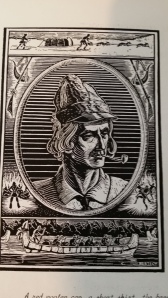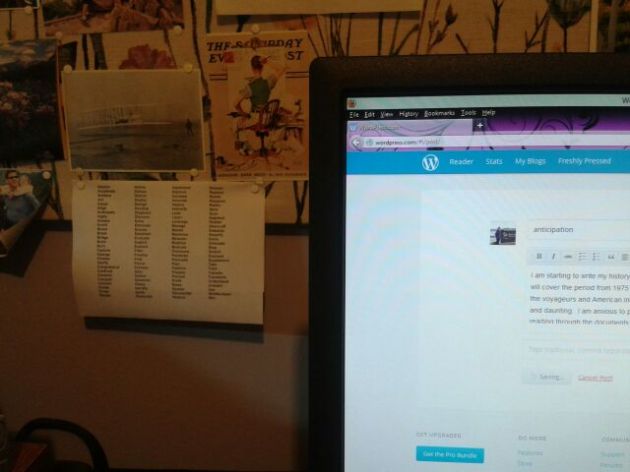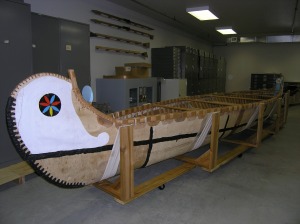I don’t remember my first time at a national park. I was three months old, and my family was heading west to San Francisco on its own little Gold Rush adventure. The “gold” in this case was a summer teaching job for my dad as he completed his Masters in Biology. It was my mom, dad, sister, and the dog in a car of questionable ability, headed west from Chicago. Where could we stop along the way? What might we see? And, how will the car make it through the mountains and valleys?
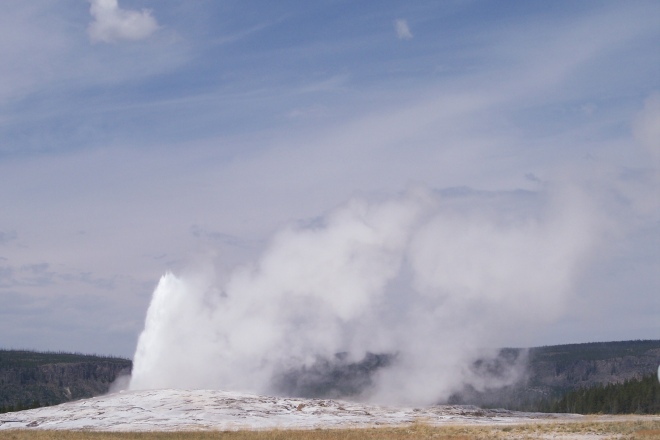
The one stop that I remember my mom talking about later was Yellowstone. And thus, somehow, Yellowstone has been part of my life from the very beginning, my national park foundation story.
In high school, Mom and I took a couple trips back to Yellowstone, walking the boardwalks to see all of the geysers. Hiking down the trails at the Grand Canyon of the Yellowstone to see the falls. Staying the night at Old Faithful Inn and writing postcards at the antique desks while looking down at the main lobby and the huge stone fireplace.
When my husband and I got married in 1988, we took the drive west and visited Yellowstone–for exactly one night. The infamous 1988 fires had almost destroyed Old Faithful Inn, and they were edging their way to Lake Hotel, where we stayed before the National Park Service kicked us out. I was relieved that the Inn survived, but I was heartbroken by the overwhelming destruction. I was also heartbroken that this was the trip in which I was to introduce my husband to “my place,” “my park,” and he couldn’t even see Lake Yellowstone for all of the smoke from the fires. In fact, when we drove south, we couldn’t see the Grand Tetons–at all. That’s how bad the 1988 fires were.
So, we went back in 1990. And luxuriated in the signs of new growth: wildflowers, saplings, green meadows. My husband caught the national park bug and has his own national park foundation story, too.
When we welcomed our daughter into the world, where else would we take her before her first birthday but Yellowstone? And, it was magical. She cried all night in one of the rooms at Old Faithful Inn, those rooms with hardly a wall between. I am sure that everyone else on the hall was glad morning broke and they could get out! And there are more stories with both kids, some equally “magical” and some not.
But why recount all of these memories? I am painfully aware that my experiences in Yellowstone and other archetypal national park sites (the Grand Canyons, Yosemites, Rocky Mountains) were possible because:
- my parents and now I have had the disposable income to spend on vacations
- my family took those vacations in national parks because they were familiar places, based upon reading about them, looking at photographs, watching TV shows with the parks, seeing advertisements related to the parks
- national park visual imagery keyed into the sensibilities of white middle-class America, of which I am a part
- that visual imagery, with its nationalistic underpinnings, reinforced the familiar aspect of national parks and cemented white middle-class American support for the parks (I wrote a whole dissertation on this idea…)
But, for the past two decades, probably more, the National Park Service has been struggling. And the struggle is more than about money. This struggle is fundamental. Who has a national park foundation story today? There are still lots of people, members of the white middle-class surely who have such stories. But who else?
I can assume that President Obama has a foundation story. He has set aside many–23?–national park units during his time in office. He has liberally applied the 1906 Antiquities Act to preserve places that in sum make the national park system reflect the diversity that is US. These sites include Cesar Chavez National Monument (civil rights, farm labor, unions, Hispanic history), Harriet Tubman Underground Railroad National Monument (African American history, Civil War, slavery, women’s history), and most recently Stonewall National Monument (LGBT history).
Hopefully these new sites, which make a total of 412? national park units, will make it so that non-white middle-class people will visit and support the parks–and elect representatives who will back that support with money. The National Park Service desperately needs these people. The racial, ethnic, and economic make-up of the United States has been undergoing tremendous change. One example: the state of Arizona, according to the Henry J. Kaiser Family Foundation, no longer has a white majority. The percentage of Blacks, Hispanics, and Asians combined nearly equal the percentage of whites. Hispanics overall in the US are now the second largest minority (18% versus Blacks at 12%). These increasing numbers of non-whites will hold an increasing amount of political power, and NPS (and every other governmental agency and non-profit organization) is trying to figure out ways to reach these people.
The National Park Service turns 100 on August 25. It chose Find Your Park as its Centennial theme, a truly blatant but brilliant way to get non-traditional visitors to establish their own foundation stories. Obama has helped, not just with creating more parks but with also getting each 4th-grade student a free pass to all the national parks for one year, the Every Kid in a Park program. Those nine-year olds and their families can see the world of national parks and create their own foundation stories. And, First Lady Michelle Obama’s Let’s Move! campaign has a national park component with the Let’s Move Outside Junior Ranger program.
Yellowstone is the park where I have my national park foundation story. It will always be my special place. I hope that you find your national park and make a commitment to it and the National Park Service. And I hope you share that foundation story with others, as broadly defined as possible.
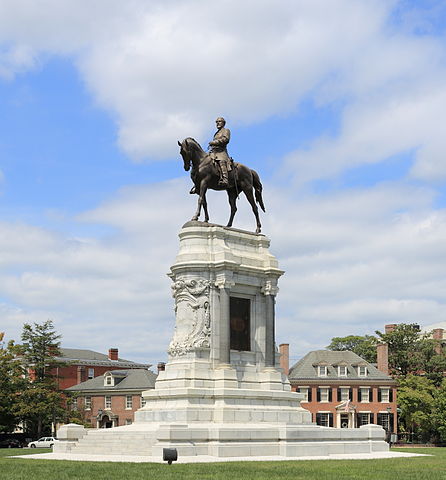
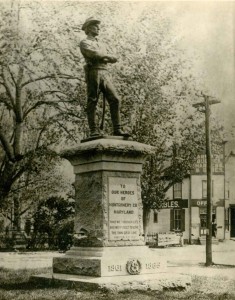
 Yesterday I “attended” a webinar about the meaning of the bison symbol for the National Park Service and the Department of the Interior. The NPS logo has a buffalo in white at the bottom point of the arrowhead. The DOI logo uses the bison front and center. I have many thoughts about the discussion that resulted. Now, I want to focus upon a statement made by a couple of people during the Live Chat. They said that they were born and raised on the East Coast and had never seen a bison close up, nor did they have any experiences to connect themselves to bison.
Yesterday I “attended” a webinar about the meaning of the bison symbol for the National Park Service and the Department of the Interior. The NPS logo has a buffalo in white at the bottom point of the arrowhead. The DOI logo uses the bison front and center. I have many thoughts about the discussion that resulted. Now, I want to focus upon a statement made by a couple of people during the Live Chat. They said that they were born and raised on the East Coast and had never seen a bison close up, nor did they have any experiences to connect themselves to bison.